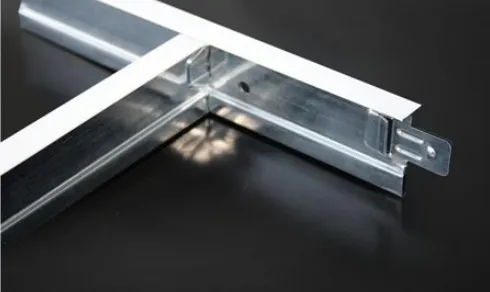Dec . 04, 2024 10:36 Back to list
suspended ceiling t bar
Understanding Suspended Ceiling T-Bar Systems
Suspended ceiling systems, particularly those utilizing T-bar grids, have become increasingly popular in commercial and residential constructions due to their versatility, aesthetic appeal, and functional benefits. This article delves into the essentials of suspended ceiling T-bar installations, their components, advantages, and considerations for choosing the right system.
What is a Suspended Ceiling?
A suspended ceiling, also known as a false ceiling or dropped ceiling, is a secondary ceiling that is hung below the main structural ceiling. This design creates a space between the two ceilings, allowing for the installation of various mechanical and electrical systems, insulation, and soundproofing materials. It is constructed using a grid system that can be made from different materials, including metal, wood, and plastic, with T-bars being the most prevalent choice.
Components of T-Bar Systems
The T-bar grid system primarily consists of main runners, cross tees, and wall angles.
1. Main Runners These are the primary horizontal supports that run across the ceiling. They are usually 12 feet long and are designed to bear the weight of the tiles.
2. Cross Tees These are shorter segments that connect perpendicular to the main runners, forming a grid that supports the ceiling tiles.
3. Wall Angles These are installed along the perimeter of the ceiling to provide edge support for the tiles and maintain a clean finish.
4. Ceiling Tiles The tiles themselves can be made from various materials, such as mineral fiber, gypsum, or metal, and come in various designs and textures to meet different aesthetic and functional needs.
Advantages of Suspended Ceiling T-Bar Systems
Suspended ceiling T-bar systems offer several significant advantages
suspended ceiling t bar

2. Access to Utilities The space above suspended ceilings can be used to hide ductwork, plumbing, electrical wiring, and other utilities, thus keeping them out of sight while still allowing for easy access when maintenance is required.
3. Acoustic Control Many ceiling tiles are designed to provide sound absorption, making suspended ceilings an excellent choice for environments where noise reduction is crucial, such as offices, schools, and hospitals.
4. Thermal Insulation Suspended ceilings can enhance thermal performance by adding a layer of insulation, helping to maintain comfortable indoor temperatures and improve energy efficiency.
5. Ease of Installation and Maintenance T-bar ceilings are relatively easy to install and can be modified or repaired with minimal disruption. Individual tiles can be removed without disturbing the entire system, making maintenance straightforward.
Considerations for Choosing a T-Bar System
When selecting a suspended ceiling T-bar system, there are several considerations to keep in mind
1. Purpose and Location The intended use of the space can greatly influence the choice of materials and the design of the ceiling. For high-humidity areas, moisture-resistant tiles are advisable, while heavy-duty tiles might be required in industrial settings.
2. Acoustic Requirements If sound dampening is a priority, choosing tiles with high Noise Reduction Coefficient (NRC) ratings will be essential.
3. Fire Safety Always consider the fire safety rating of the materials used, particularly in commercial buildings, where codes may dictate specific requirements.
4. Budget While budget constraints are always a consideration, investing in higher-quality materials can improve durability and minimize long-term maintenance costs.
Conclusion
Suspended ceiling T-bar systems represent a practical and aesthetically pleasing option for modern architecture. Their ability to integrate technology, enhance acoustics, and improve thermal performance makes them a valuable asset in various building projects. By understanding the components, advantages, and considerations involved in T-bar installation, builders and designers can make informed decisions that meet the specific needs of their spaces.
-
Quality Ceiling Trap Doors & Access Panels | Easy & Secure AccessNewsAug.30,2025
-
Durable Ceiling T Grid Systems | Easy InstallationNewsAug.29,2025
-
PVC Gypsum Ceiling: Durable, Laminated Tiles for Modern SpacesNewsAug.28,2025
-
Pvc Gypsum Ceiling Is DurableNewsAug.21,2025
-
Mineral Fiber Board Is DurableNewsAug.21,2025
-
Ceiling Tile Clip Reusable DesignNewsAug.21,2025







